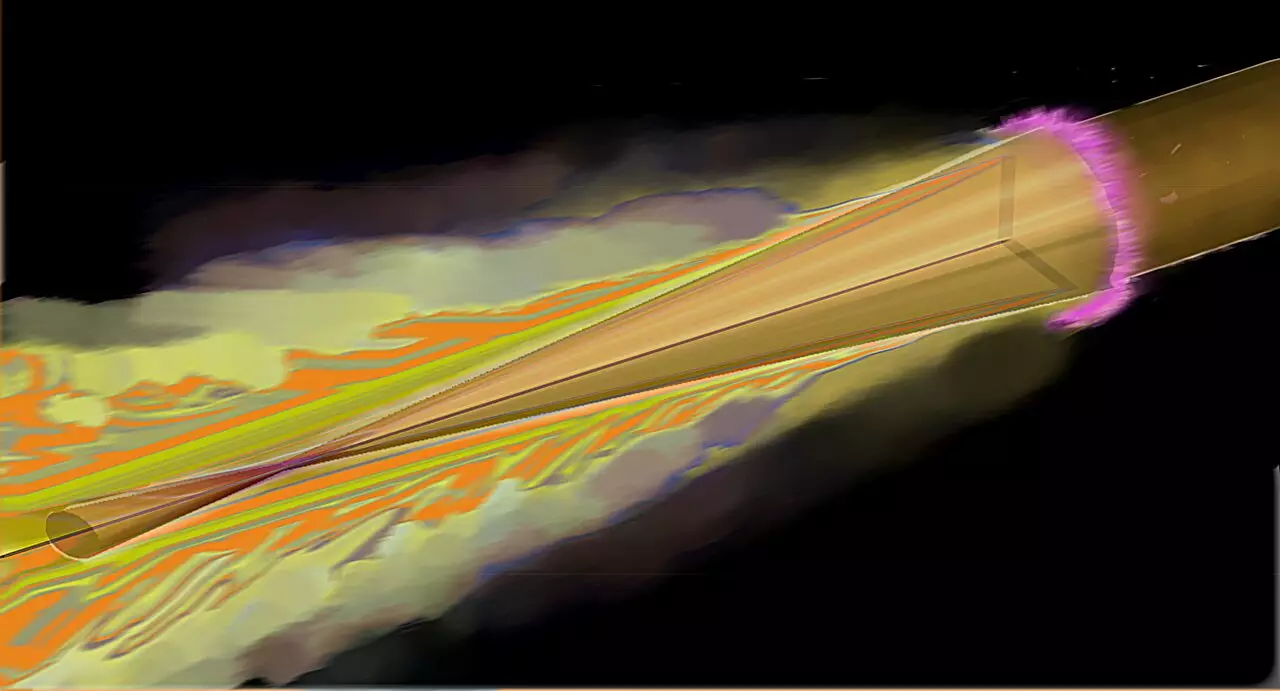Extreme conditions found within celestial bodies such as stars and planets present some of the most intriguing environments in physics. The vast pressures, often reaching millions of bars, combined with temperatures soaring into the millions of degrees Celsius, forge matter into unique states that challenge our understanding of the fundamental properties of materials. While researchers have traditionally relied on powerful laser facilities — like the National Ignition Facility in California — to replicate such phenomenon, recent developments at the Helmholtz-Zentrum Dresden-Rossendorf (HZDR) in collaboration with the European XFEL have ventured into new territory. This pioneering research employs a more compact laser system, revolutionizing how extreme conditions can be simulated and studied.
Historically, recreating the extreme environments of space required formidable lasers, which presented significant limitations due to their scale and the infrequency of use. Researchers at HZDR have now introduced an innovative technique that utilizes a copper wire thinner than a human hair, enabling them to generate and observe high-energy states with less demanding apparatus. By firing intense laser pulses at this minimal material sample, the conditions necessary to mimic those within celestial bodies are created, albeit momentarily. The combination of rapid heating and shockwave propagation inside the wire has opened up new avenues for investigation.
Central to the experimentation is the synchronization of a high-intensity laser and ultra-bright X-ray flashes from the European XFEL. This synergy is crucial for observing the rapid phenomena that occur once a laser pulse interacts with the material. The study highlights how significant insights can be extracted within a remarkably short span of time, employing advanced measurement techniques that capture the fleeting moments of high-energy interactions.
The collaborative research team conducted a series of meticulous measurements, varying the timing between laser and X-ray emissions to capture a comprehensive “X-ray film” of the process. This method enabled them to document the interactions within the copper wire in unprecedented detail. As described by Dr. Alejandro Laso Garcia, the approach is unparalleled globally, making it possible to observe phenomena that were previously elusive. Initial observations revealed that upon impact, the laser pulse generated a localized shockwave that traveled through the wire, creating a cascade of reactions.
High-energy electrons, propelled by the laser’s energy, raced along the wire’s surface, leading to further shockwave formations. These interactions converged at the core, elevating pressures to staggering levels — estimates indicated that densities surged up to nine times greater than standard cold copper, alongside pressure levels reaching an astonishing 800 megabars. Such conditions prevail near extremely dense stellar remnants, pushing the frontiers of matter’s behavior under duress.
The findings pave the way for studying materials not just under laboratory conditions, but also for understanding the physical processes occurring in gas giants, such as Jupiter and even distant exoplanets with similar makeup. The blend of accessible laboratory techniques with astrophysical principles exudes the potential to expand our comprehension of cosmic chemistry and physics dramatically.
Moreover, this research holds utility far beyond mere material science. As Ulf Zastrau, head of the HED group at the European XFEL asserts, the insights gained from the current methodology could drive significant advancements in fusion energy research. The quest for sustainable energy solutions hinges on achieving efficient fusion, a process mimicking the stellar energy generation methods that have powered the universe for eons. By elucidating the intricate behaviors of matter under extreme conditions, the research may solidify advancements in fusion reactors that utilize high-performance laser ignition.
Looking forward, the HZDR research team is exploring the viability of this method with different materials, such as iron and plastics that contain hydrogen and carbon. These materials are more aligned with the fundamental constituents of stars, demonstrating the versatility and application potential of their approach. The implications of this work could redefine how we undertake material studies at the atomic level, as well as inform our understanding of the origins and behaviors of the universe.
The development of advanced laser techniques by HZDR represents a watershed moment in the study of extreme conditions. With the capability to simulate phenomena akin to those found in the most distant stars and gas planets, this research not only enriches our knowledge of matter but also pushes the boundaries of scientific inquiry into the cosmos. As fusion research evolves and expands, the implications of this work will likely resonate throughout various fields, ultimately supporting humanity’s pursuit of clean and inexhaustible energy.


Leave a Reply